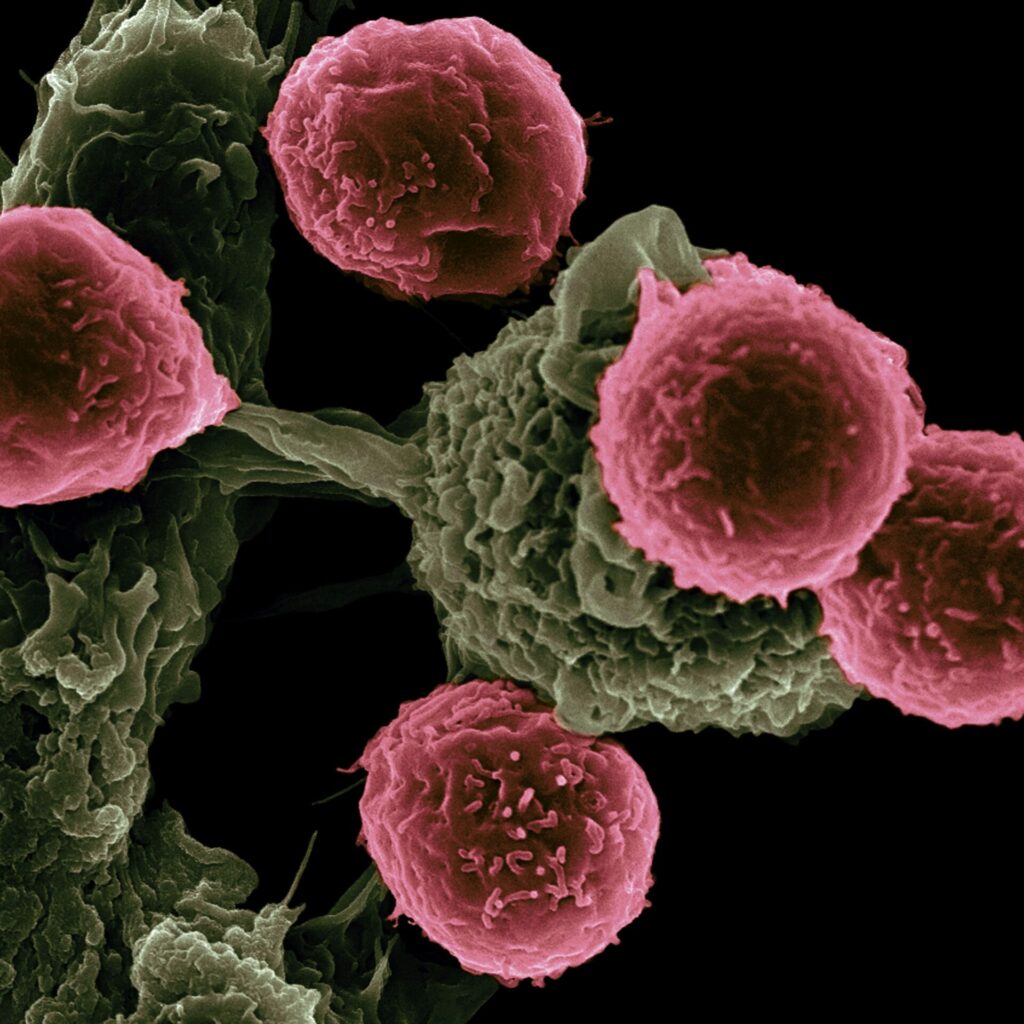Increasing optimism for sufferers of this aggressive cancer type
The treatment of non-small cell lung cancer (NSCLC) remains a formidable challenge in oncology. NSCLC accounts for approximately 85% of all lung cancer cases and is the most common type of lung cancer.1
Lung cancer is the leading cause of cancer death globally, accounting for approximately 1 in 5 cancer deaths.2
Despite advancements in targeted therapies and immunotherapies for NSCLC, significant gaps persist in addressing the needs of patients, particularly those with advanced or treatment-resistant forms of the disease. iOnctura’s Chief Medical Officer, Michael Lahn discusses how iOnctura is addressing drug resistance for this aggressive form of cancer.
Q.
What are the significant gaps in the treatment of NSCLC?
One of the most pressing needs is the development of therapies that can overcome resistance mechanisms. Whilst drugs targeting specific mutations, such as EGFR or ALK, have revolutionized treatment for patients with such mutations, treatment for patients with disease progression due to resistance remains challenging. Immunotherapies, such as the PD-1/PD-L1 inhibitors, which harness the immune system to fight cancer, have significantly improved patient outcomes, particularly in advanced stages of NSCLC. Unfortunately, only a subset of patients respond to these treatment and treatment duration is often limited.

Unfortunately, with current immuno- and chemotherapies for NSCLC, only a subset of patients respond to treatment and treatment duration is often limited.
Q.
How are drug companies looking to help fill this gap?
Innovative approaches that can target resistance pathways are a key area of current drug development. Combinations of treatments to overcome or prevent resistance mechanisms offer the promise of increased efficacy and enhanced quality of life for NSCLC patients. We consider that an ideal combination partner with current therapies should be highly selective, have a high precision for its target and be a small molecule with a good tolerability profile. In addition, novel agents are being developed to target tumor-promoting mutations that can induce resistance to the previous therapy.

Q.
Does iOnctura’s roginolisib have potential to target these resistance pathways?
We believe so! As a pioneering clinical-stage biopharmaceutical company, our focus is on driving innovation through clinical trials with novel agents that can alter or block cancer-promoting mechanisms.
We recently initiated a randomized Phase I/II study, investigating the combination of roginolisib with GSK’s anti-PD1 monoclonal antibody dostarlimab with and without the chemotherapeutic agent docetaxel in patients with NSCLC who have progressed on prior immunotherapy or chemo/immunotherapy. Emerging clinical and translational biomarker data supports the hypothesis that combining roginolisib with an anti-PD-L1/PD1 agent (with or without chemotherapy), may prevent or reverse drug resistance in NSCLC and may show synergistic anti-tumor immune activity.3
Q.
How important is cross-functional collaboration across the oncology and the broader pharma / biotech landscape?
Very important for sure. The journey from early-stage clinical trials into the clinic and widespread adoption requires robust collaboration among researchers, clinicians, pharma partners and patient advocates. We believe the future of NSCLC treatment lies in embracing cutting-edge science and maintaining a patient-centric approach. By prioritizing innovation and addressing the gaps in current care, the teams and scientists in agile biotech companies, like ours, can help to pave the way for transformative advancements.
Q.
Can you name one priority or patient need that drives your daily work?
For me – enhancing the length of high-quality life – or health span as we call it – for patients with neglected and hard-to-treat cancers, using highly selective, low toxicity small molecules remains my utmost priority.
Sources
- Medscape Registration. Last accessed 01.05.2025
- Lung Cancer Key Facts, dated June 2023. World Health Organization. Last accessed 01.05.2025
- iOnctura press release, dated 8 May 2025. iOnctura. Last accessed 08.05.2025










